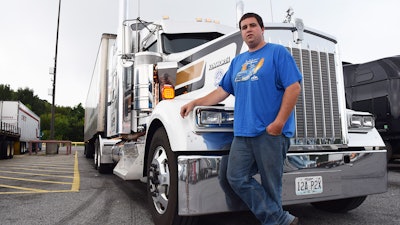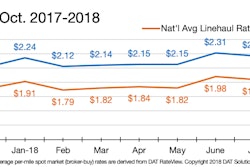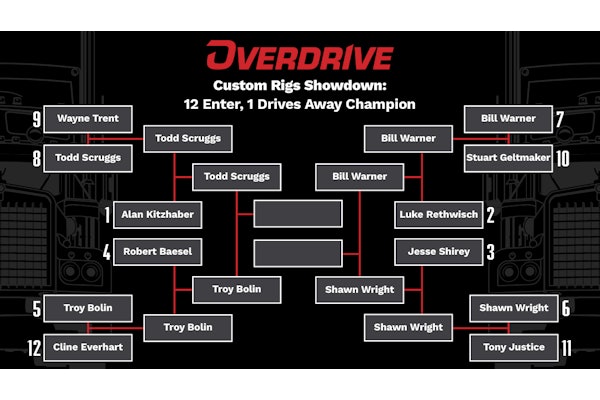 Jeff Aleman, a 26-year-old owner-operator leased to boat-hauling fleet Carthage Marine Transport, bought his 2016 Kenworth Icon W900 early last year after becoming an owner-operator the year prior. He says he hopes to get his own authority and run a small fleet.
Jeff Aleman, a 26-year-old owner-operator leased to boat-hauling fleet Carthage Marine Transport, bought his 2016 Kenworth Icon W900 early last year after becoming an owner-operator the year prior. He says he hopes to get his own authority and run a small fleet.Growth in the number of very small fleets, those with fewer than six trucks, has far outpaced growth in the number of larger carriers in recent years, according to data from Qualified Carriers, a compliance and safety consultant.
The firm says a rebounding economy and modern tech allow easier entrance into the owner-operator market and a higher chance of success. Small fleets have also had much better success at adding drivers than their large fleet counterparts, according to QC’s data.
The number of registered carriers with six or fewer trucks grew by 72 percent from February 2012 to July of this year, according to Qualified Carriers’ data. That’s an increase of 78,624 fleets — from 109,009 to 187,633 in the roughly six-year period. The number of carriers with seven to 19 trucks grew by 6,807, nearly a 40 percent increase.
While it’s no surprise that in a booming economy the growth in carriers would tend to be among smaller ones, a significant difference in this cycle is that new tools have helped make it easier for small fleets to prosper, says Jeff Tucker, owner and CEO of Qualified Carriers and brokerage Tucker Company Worldwide. This has made independence more attractive, he says.

“Tools like Truckstop.com give owner-operators data that only the big guys had before. Tools [available] for credit worthiness and collections and speed of pay — all these tools are so cheap. You’ve got opportunity because the economy is in the second largest recovery [in history]. You also have the scarcity [in capacity] that economics plus ELDs have caused.” In his 30 years in the industry, Tucker says, “Smaller fleets and owner-operators are able to make it for the first time and able to be profitable for the first time.”
Not only has growth of DOT-registered fleets been concentrated at the very small fleet level, but the number of new drivers has been heavily concentrated there as well, he says. That’s despite fleets with more than 500 power units operating nearly twice as many trucks as those with 19 or fewer power units (728,000 trucks vs. just over 400,000 trucks).
Fleets with 19 or fewer trucks have added 225,000 net new drivers since February 2012, he says, whereas fleets with more than 500 power units have added 155,000 drivers.
The industry as a whole added 535,843 net drivers between February 2012 and July 2018, says Tucker. Fleets with fewer than 100 trucks accounted for 322,000 of those additional operators.
He says that the industry’s “driver shortage” is a problem mostly isolated to large fleets, which have had more trouble adding the drivers they say they need. Drivers are more apt to work for smaller fleets, he says, because they’re “treated more like a person than a number, which means they feel more like a family at a smaller firm.” Smaller fleets also generally have better loads, he says.
ATBS, which uses a different data set to measure growth in the owner-operator market, has also noticed the growth of single-truck independents. They peg the owner-operator segment as growing from 224,000 in early 2012 to 268,000 currently. ATBS is the nation’s largest owner-operator financial services firm.
Like Tucker, ATBS President and CEO Todd Amen attributes the gains in owner-operator numbers to a strong economy and more available tools. He also cites cheap equipment as making independence appealing.
“Technology, No. 1, has made it a lot easier,” he says. “It’s lowered the barrier of entry to be that small fleet operator. With load boards, getting authority online — technology has just made it much easier to be an independent truck line.” He also said adoption of electronic logging devices by larger fleets prior to the Dec. 18 ELD mandate deadline could have pushed their drivers and leased operators to go independent as a way to put off ELDs as long as possible.
An upswell in used truck volume has suppressed prices of used trucks in recent years, making the cost of becoming an owner-operator cheaper, Amen says.










